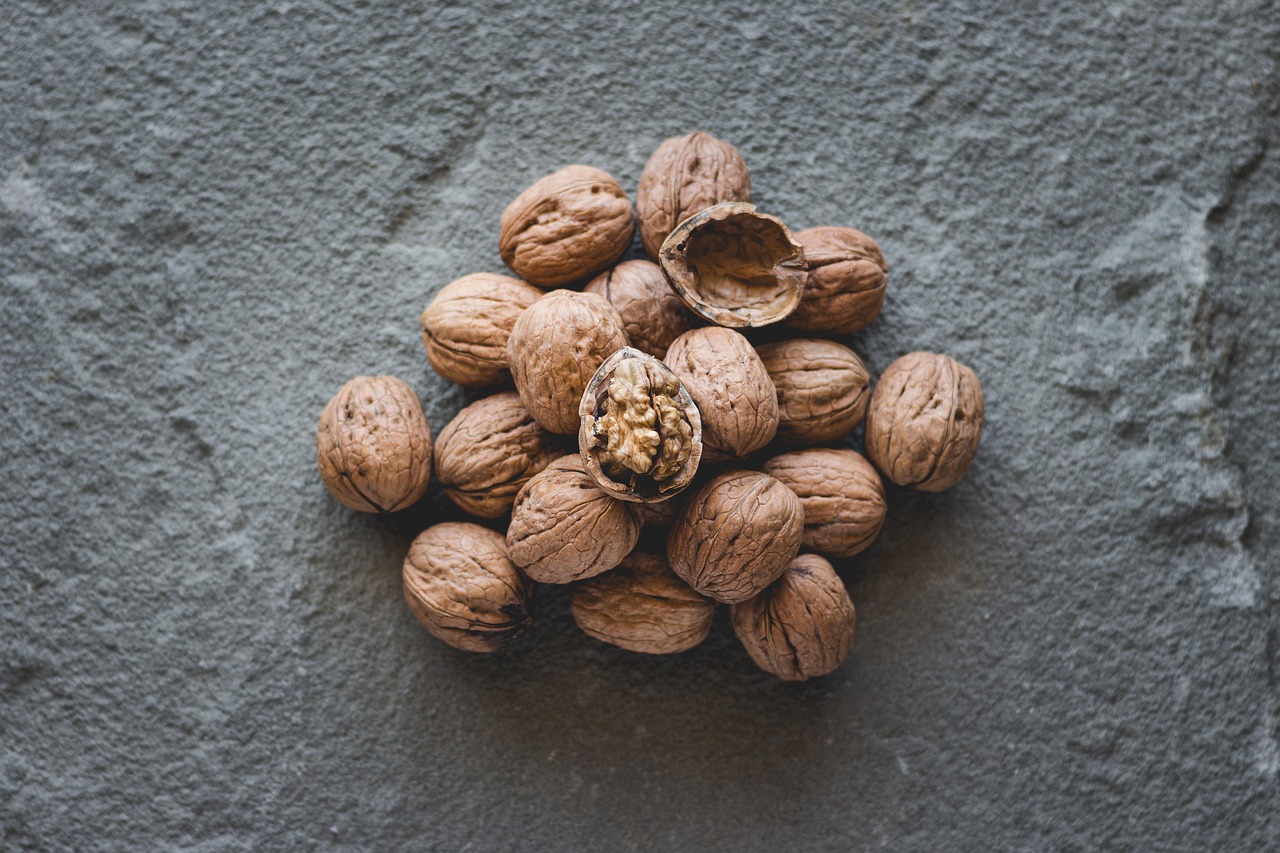Recognizing a healthy Douglas Fir tree involves observing specific visual indicators, including vibrant green needles, a symmetrical crown, and a robust trunk. These features suggest good health and vitality, while signs of discoloration, dead branches, or excessive drooping may indicate stress or disease.
The Douglas Fir tree (Pseudotsuga menziesii) is a popular conifer found predominantly in the western United States and Canada. It is known for its tall stature, straight trunk, and distinctive needle arrangement. This evergreen is widely used for timber and landscaping due to its aesthetic appeal and resilience. Understanding the signs of a healthy tree is crucial for foresters, gardeners, and homeowners alike. A well-maintained Douglas Fir not only enhances the landscape but also contributes to local ecosystems.
Key Visual Indicators of a Healthy Douglas Fir

Identifying a healthy Douglas Fir hinges on several visual characteristics. Each aspect of the tree’s appearance can provide insights into its overall health. Here are some critical indicators to observe:
- Needle Color: The needles should be a vibrant green, indicating that the tree is photosynthesizing effectively.
- Crown Shape: A symmetrical crown suggests balanced growth, which is often a sign of good health.
- Trunk Condition: A straight, sturdy trunk free from cracks or lesions is essential for structural integrity.
- Branch Health: Healthy branches should be flexible, with no signs of brittleness or dieback.
- Growth Rate: A consistent growth rate each year reflects good health and favorable growing conditions.
In addition to these indicators, it is important to consider the overall condition of the surrounding environment. Douglas Firs thrive in specific conditions and may exhibit stress if those conditions are not met. Factors such as soil quality, water availability, and exposure to sunlight play significant roles in the health of these trees.
Environmental Factors Affecting Health
The health of a Douglas Fir is not solely dependent on its observable features. Environmental conditions significantly impact its growth and vitality. Below are some key factors that influence the overall health of Douglas Firs:
| Environmental Factor | Description |
|---|---|
| Soil Quality | Rich, well-draining soil supports healthy root development. |
| Water Availability | Consistent moisture is essential, especially during dry spells. |
| Sunlight Exposure | Douglas Firs prefer full sun to partial shade for optimal growth. |
| Pest Presence | Monitoring for pests can prevent infestations that harm tree health. |
By paying attention to both visual indicators and environmental factors, one can gain insight into the health of a Douglas Fir tree. Regular observation helps ensure that these majestic trees continue to thrive in their landscapes.
Common Diseases Affecting Douglas Fir Trees
Despite their resilience, Douglas Fir trees can be susceptible to various diseases that may affect their health. Recognizing the signs of these diseases early can help in taking appropriate action to mitigate their impact. Below are several common diseases that affect Douglas Firs:
- Root Rot: Caused by fungi such as Armillaria, root rot leads to the decay of the tree’s root system. Symptoms include stunted growth and yellowing needles.
- Needle Cast: This fungal disease causes needles to turn brown and drop prematurely. It is often exacerbated by wet conditions.
- Bark Beetle Infestation: Bark beetles can bore into the tree, disrupting its nutrient flow. Signs include sawdust at the base and the presence of tiny holes in the bark.
- Powdery Mildew: This fungal growth appears as a white powdery substance on needles. It can weaken the tree over time.
Understanding these diseases’ symptoms is crucial for maintaining the health of Douglas Fir trees. Regular inspections can help detect early signs of distress, allowing for timely interventions.
Pest Management Strategies
Pests pose a significant threat to the health of Douglas Fir trees. Effective pest management strategies can help protect these trees from infestations. Here are some recommended strategies:
- Regular Monitoring: Conduct frequent inspections of the trees for any signs of pest activity, including discolored needles or abnormal growth patterns.
- Use of Insecticides: If pests are detected, consider using insecticides targeted at specific pests. Always follow label instructions for safe application.
- Encouraging Natural Predators: Birds and beneficial insects can help control pest populations. Planting native species nearby can attract these natural predators.
- Maintaining Tree Health: A healthy tree is less susceptible to pest infestations. Ensure proper watering, fertilization, and pruning practices are followed.
Implementing these strategies can significantly reduce the risk of pest-related damage to Douglas Fir trees, promoting longevity and health.
Importance of Pruning and Maintenance
Pruning is another essential aspect of maintaining a healthy Douglas Fir tree. Proper pruning encourages healthy growth and can help prevent disease and pest infestations. Here are some benefits of regular pruning:
- Improves Air Circulation: Pruning helps open up the canopy, allowing better air circulation, which reduces humidity levels and discourages fungal growth.
- Enhances Light Penetration: By removing crowded branches, more sunlight reaches the inner foliage, promoting overall tree health.
- Removes Dead or Diseased Wood: Eliminating dead or diseased branches prevents the spread of disease and pests to healthy parts of the tree.
- Shapes Growth: Pruning can help shape the tree’s growth habit, resulting in a more aesthetically pleasing form.
It is recommended to prune Douglas Fir trees during late winter or early spring when they are still dormant. This timing minimizes stress and encourages new growth as the tree awakens from dormancy.
Seasonal Considerations for Tree Health
The changing seasons can significantly affect the health of Douglas Fir trees. Understanding these seasonal variations is crucial for optimal care. Here are some seasonal considerations:

- Spring: This is a critical time for growth. Ensure trees receive adequate water during dry spells and monitor for pest activity as temperatures rise.
- Summer: Heat stress can occur during hot months. Mulching around the base can help retain moisture and regulate soil temperature.
- Autumn: Fall is an ideal time for pruning before winter dormancy sets in. It is also important to clear debris around the base to prevent overwintering pests.
- Winter: Protect young trees from heavy snow and ice, which can break branches or cause structural damage.
By considering these seasonal factors, one can take proactive measures to ensure that Douglas Fir trees remain healthy throughout the year.
Identifying Nutrient Deficiencies in Douglas Fir Trees

Nutrient deficiencies can significantly impact the health and growth of Douglas Fir trees. Understanding the signs of these deficiencies is essential for proper management. The most common nutrient deficiencies that affect Douglas Fir trees include nitrogen, phosphorus, potassium, and magnesium deficiencies.
Nitrogen Deficiency
Nitrogen is vital for the production of chlorophyll, which is necessary for photosynthesis. Deficiency symptoms include:
- Yellowing Needles: Older needles may turn yellow while new growth remains green.
- Stunted Growth: Trees may exhibit reduced growth rates and a thinner appearance.
- Poor Needle Retention: Affected trees may shed their needles prematurely.
Phosphorus Deficiency
Phosphorus plays a key role in energy transfer and photosynthesis. Signs of deficiency are:
- Purple or Dark Green Foliage: Needles may develop a noticeable purple hue.
- Delayed Maturity: Trees may take longer to mature, affecting overall health.
Potassium Deficiency
Potassium is essential for water regulation and enzyme activation. Symptoms of potassium deficiency include:
- Brown Leaf Tips: The tips of older needles may turn brown and die back.
- Weak Branches: Trees may develop weaker branches that are more susceptible to breakage.
Magnesium Deficiency
Magnesium is crucial for chlorophyll production as well. Signs of magnesium deficiency include:
- Interveinal Chlorosis: Yellowing between the veins of older needles while the veins remain green.
- Leaf Drop: Affected trees may drop leaves prematurely, impacting overall health.
Soil Testing and Amendments
To effectively address nutrient deficiencies, soil testing is recommended. This process assesses the nutrient content and pH levels in the soil. Here are steps to conduct soil testing and make necessary amendments:
- Collect Soil Samples: Take samples from multiple locations around the tree, about 6-8 inches deep.
- Send to a Lab: Submit your samples to a professional laboratory for analysis.
- Review Results: Look for nutrient levels and pH recommendations.
- Add Amendments: Based on the results, add fertilizers or organic matter to address deficiencies.
These amendments can improve soil fertility and promote healthy growth in Douglas Fir trees.
The Role of Water Management
Water management is another critical aspect of maintaining healthy Douglas Fir trees. Both overwatering and underwatering can lead to stress and health issues. Here are some best practices for effective water management:
- Deep Watering: Ensure that trees receive deep watering sessions rather than frequent shallow watering. This encourages deep root growth.
- Avoid Waterlogging: Ensure proper drainage in the planting area to prevent root rot caused by standing water.
- Monitor Soil Moisture: Regularly check soil moisture levels, especially during dry periods, to determine when watering is necessary.
- Seasonal Adjustments: Adjust watering frequency based on seasonal weather changes, ensuring trees have adequate moisture during hot months.
Proper water management not only supports tree health but also enhances nutrient uptake, leading to robust growth and vitality in Douglas Fir trees.
Mulching and Its Benefits

Applying mulch around the base of Douglas Fir trees offers several benefits that contribute to their health. Here are some advantages of mulching:
- Moisture Retention: Mulch helps retain soil moisture, reducing the need for frequent watering.
- Temperature Regulation: It insulates the soil, keeping it cooler in summer and warmer in winter.
- Weed Suppression: A layer of mulch prevents weeds from competing for nutrients and water.
- Nutrient Addition: Organic mulches decompose over time, adding nutrients back into the soil.
The use of mulch can significantly enhance the growing conditions for Douglas Fir trees, promoting healthier and more vigorous growth.
Additional Care Tips for Douglas Fir Trees
In addition to mulching, water management, and monitoring for pests and diseases, there are several other care practices that can contribute to the overall health of Douglas Fir trees. Implementing these strategies can enhance their growth and resilience:
- Fertilization: Applying a balanced fertilizer during the growing season can provide essential nutrients that may be lacking in the soil. It is essential to choose a fertilizer specifically formulated for evergreen trees to promote optimal growth.
- Proper Spacing: Ensure that Douglas Fir trees are planted with adequate spacing to prevent overcrowding. Proper spacing allows for sufficient air circulation and sunlight penetration, reducing the risk of disease.
- Regular Inspections: Conduct routine checks for any signs of stress, disease, or pest infestations. Early detection can significantly increase the chances of successful intervention.
- Proper Planting Techniques: When planting new Douglas Fir trees, ensure they are placed at the correct depth and in well-draining soil. This will help establish strong roots and promote healthy growth.
By adopting these additional care practices, you can create a supportive environment for your Douglas Fir trees, enhancing their longevity and aesthetic appeal.
Final Thoughts
Recognizing a healthy Douglas Fir tree involves understanding its visual indicators, monitoring its environment, and implementing effective care practices. From vibrant green needles and symmetrical crowns to proper water management and mulching strategies, each aspect plays a vital role in maintaining the health of these majestic trees.
Awareness of common diseases and pests, coupled with proactive management techniques, ensures that Douglas Fir trees can thrive in various environments. Regular inspections, soil testing, and appropriate fertilization methods contribute significantly to fostering a healthy ecosystem around these trees.
Ultimately, by prioritizing the health and maintenance of Douglas Fir trees, you can enjoy their beauty and benefits for many years to come. Whether in a home landscape or a larger forested area, these trees are valuable assets that deserve careful attention and care.
